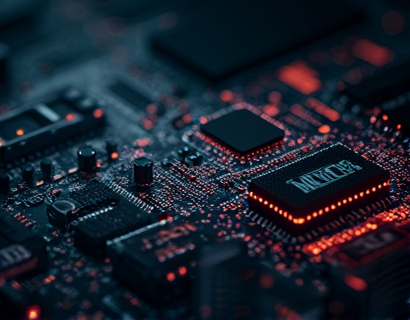Personalized AI-Driven Math Education for Kids and Young Learners: Transforming Learning and Building Future STEM Leaders
In the rapidly evolving landscape of education, the integration of Artificial Intelligence (AI) has opened new avenues for personalized learning experiences. AI-driven personalized math education for kids and young learners aged 5 to 18 is revolutionizing the way children engage with mathematics. This approach combines interactive problem-solving, engaging resources, and adaptive pathways to build confidence, enhance academic performance, and inspire a lifelong love for mathematics and STEM fields.
The traditional one-size-fits-all approach to math education often fails to meet the diverse needs of students. Each child has unique learning paces, styles, and interests. AI-driven personalized math education addresses these challenges by tailoring the learning experience to individual students. This personalized approach ensures that every child receives the support and challenges they need to thrive, fostering a more inclusive and effective learning environment.
Adaptive Learning Pathways
One of the core features of AI-driven personalized math education is the creation of adaptive learning pathways. These pathways dynamically adjust to the student's performance, providing customized lessons and exercises that align with their current skill level and learning goals. As students progress, the system continuously assesses their understanding and adjusts the difficulty and type of problems presented.
This adaptability is crucial for maintaining student engagement and preventing frustration or boredom. By constantly challenging students at the right level, AI-driven systems help them stay motivated and focused on their learning journey. Adaptive pathways also allow for a more efficient use of time, as students spend less time on concepts they already master and more time on areas that need improvement.
Interactive Problem-Solving
Interactive problem-solving is another key component of AI-driven personalized math education. Traditional math worksheets and textbooks often lack the interactivity needed to fully engage young learners. AI-powered platforms, however, offer interactive environments where students can explore mathematical concepts through hands-on activities, simulations, and games.
These interactive elements not only make learning more enjoyable but also deepen understanding by allowing students to experiment and see the immediate results of their actions. For example, a student might use a virtual manipulative to explore fractions or use a graphing tool to visualize algebraic functions. This hands-on approach helps build a strong conceptual foundation, which is essential for advanced math topics.
Engaging Resources
Engaging resources are vital for keeping young learners interested and motivated. AI-driven math education platforms curate a wide range of multimedia content, including videos, animations, and interactive stories, to explain complex concepts in an accessible and entertaining way. These resources cater to different learning styles, ensuring that visual, auditory, and kinesthetic learners all find materials that resonate with them.
Moreover, the use of real-world examples and applications helps students see the relevance of math in their everyday lives. By connecting abstract concepts to practical scenarios, AI-driven platforms make math more relatable and meaningful. This approach not only enhances understanding but also sparks curiosity and a desire to learn more.
Building Confidence and Academic Performance
The personalized nature of AI-driven math education significantly contributes to building student confidence. By starting at the right level and providing consistent support, these systems help students overcome initial fears and doubts. As they achieve small victories and see their progress, their self-efficacy grows, encouraging them to tackle more challenging problems.
Improved academic performance is a direct result of this increased confidence and targeted learning. Students who receive personalized instruction are more likely to grasp difficult concepts and retain information over time. The data-driven insights provided by AI systems also enable teachers to identify areas where students struggle, allowing for timely interventions and further support.
Preparing for Future STEM Success
AI-driven personalized math education lays a strong foundation for future success in STEM fields. Mathematics is the cornerstone of science, technology, engineering, and mathematics, and a solid understanding of math concepts is essential for pursuing careers in these areas. By fostering a love for math from a young age, these platforms inspire students to explore STEM subjects further.
Moreover, the skills developed through personalized math education, such as critical thinking, problem-solving, and logical reasoning, are highly valued in STEM professions. Students who have experienced the benefits of AI-driven learning are better prepared to succeed in high school, college, and beyond, equipped with the tools and mindset needed to excel in complex and dynamic environments.
Challenges and Considerations
While AI-driven personalized math education offers numerous benefits, it is important to address potential challenges and considerations. One key issue is the digital divide, where not all students have equal access to the technology required for these platforms. Ensuring equitable access is crucial to prevent widening the gap between different socioeconomic groups.
Another consideration is the quality and accuracy of the AI algorithms used. Educational AI systems must be rigorously tested and validated to ensure they provide reliable and effective learning experiences. Continuous monitoring and updates are necessary to keep the content up-to-date and aligned with educational standards.
The Role of Educators
Despite the advanced capabilities of AI-driven math education, the role of educators remains vital. Teachers serve as guides and mentors, providing emotional support, context, and real-world connections that AI cannot fully replicate. The integration of AI tools should enhance, not replace, the human element of teaching.
Educators can leverage AI-driven insights to inform their instruction, identify student needs, and tailor their teaching strategies. This collaborative approach ensures that students receive a well-rounded education, combining the strengths of both technology and human expertise.
Conclusion
AI-driven personalized math education represents a significant leap forward in how we teach and learn mathematics. By offering adaptive pathways, interactive problem-solving, and engaging resources, these platforms transform the learning experience for kids and young learners. The benefits extend beyond academic performance, fostering confidence, creativity, and a lifelong passion for STEM subjects.
As this technology continues to evolve, it holds the potential to create a more inclusive and effective education system. By addressing the unique needs of each student, AI-driven math education not only prepares today's learners for success but also inspires the next generation of STEM leaders.










































